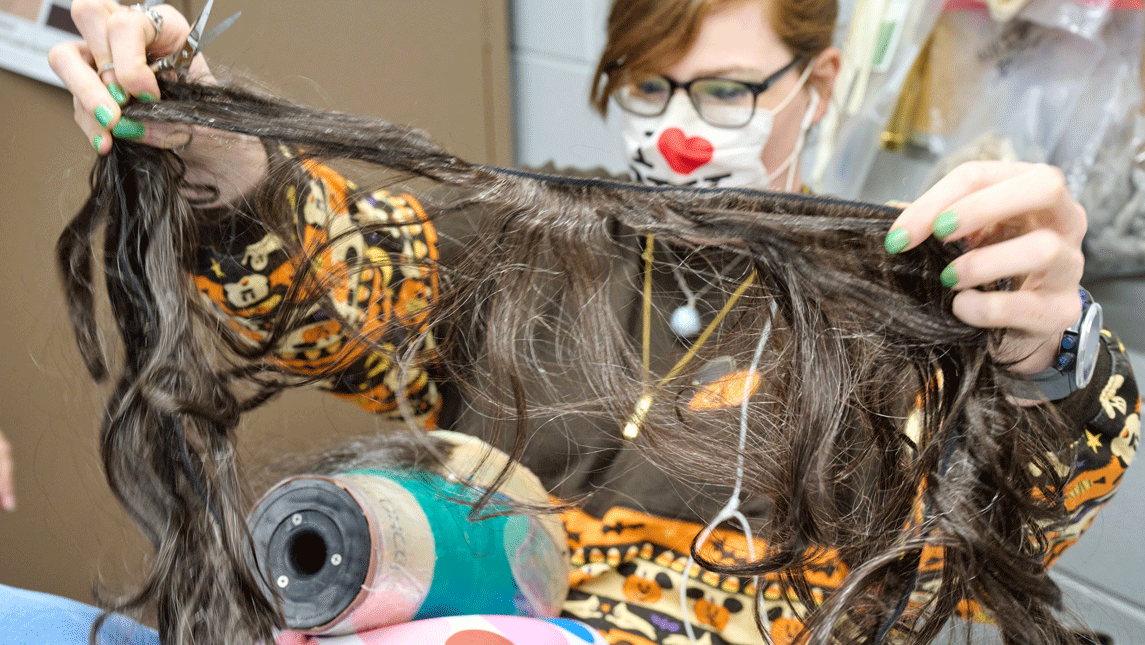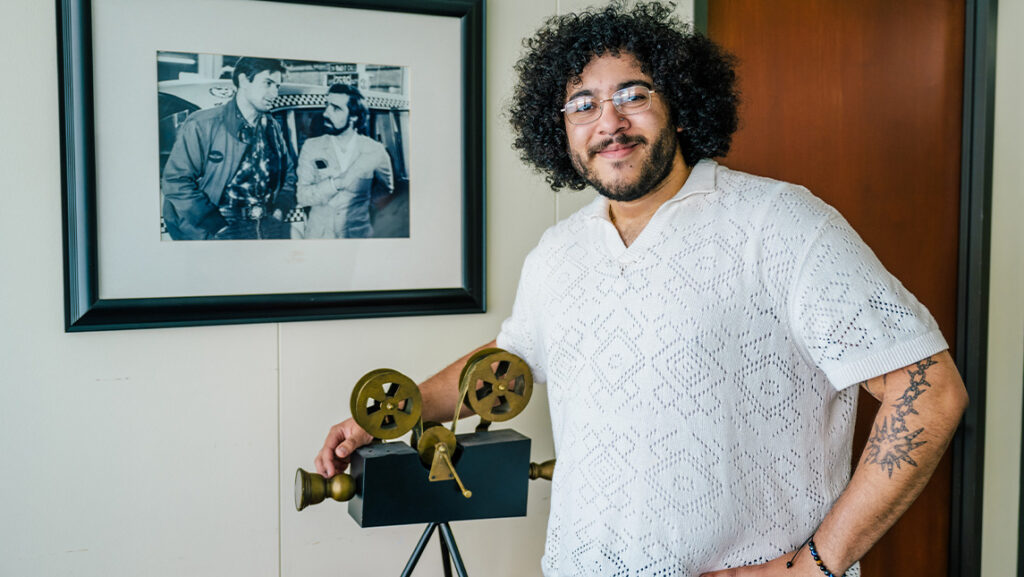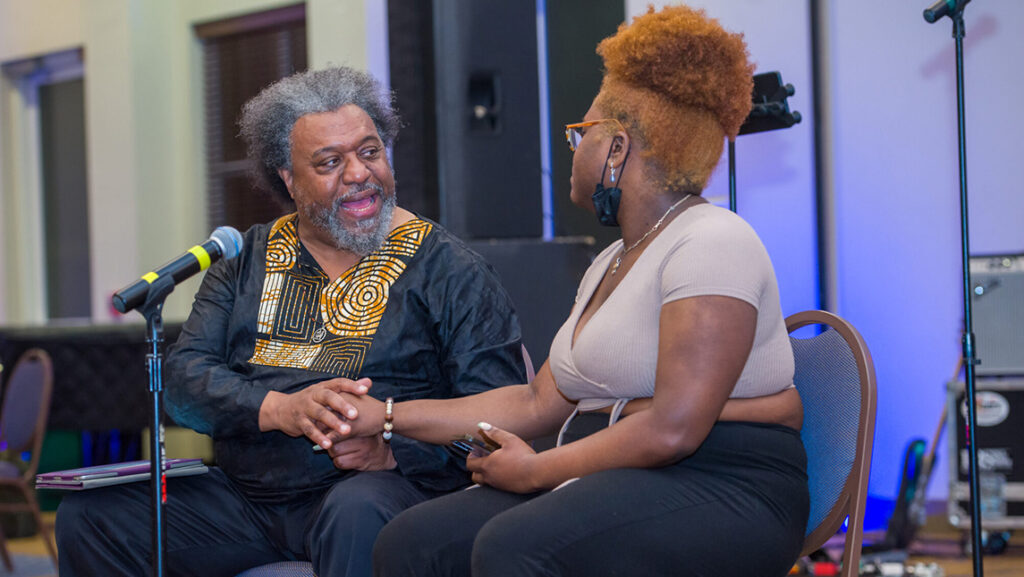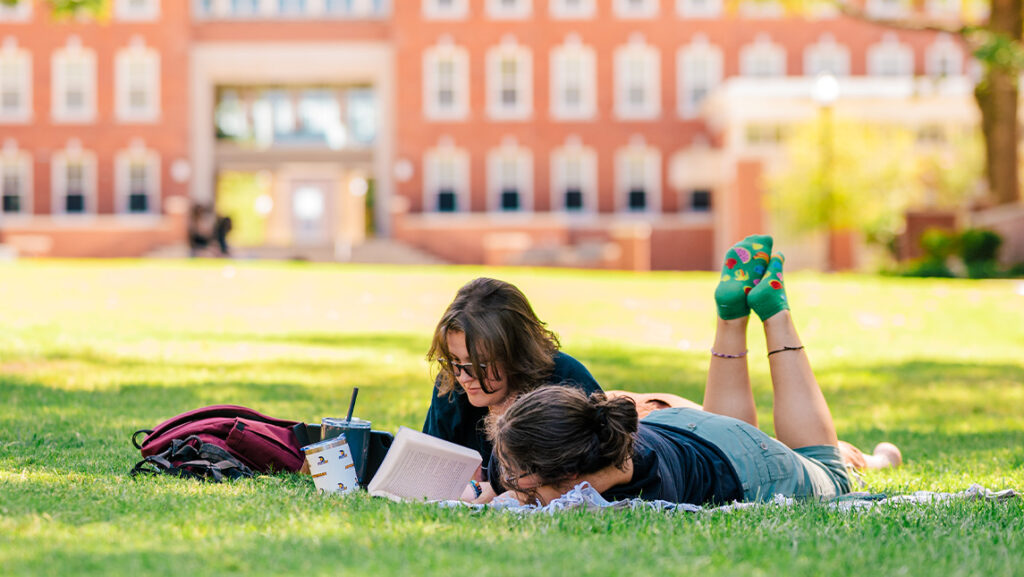It’s that time of year – when Halloween-revelers consider their costumes, pulling in whatever resources they can find to create a character for an evening and have some fun.
But at UNC Greensboro, there are many students and a team of faculty members on campus who consider costumes every day of the year. With many opportunities to work on live theater productions, undergraduate and graduate students learn to be costume designers, stylists, assistant designers, wig and makeup designers, wardrobe supervisors, cutter-drapers, costume crafts artisans, stitchers, and wardrobe dressers. All 300 majors in the School of Theatre receive a basic education in costume sewing, wigs and make up, or design, and the work takes place at the Costume Studio at 326 Tate St.
Two UNCG faculty members who focus on costuming offer their perspectives on Halloween fun and how it relates to or contrasts with their work with students in the School of Theatre.
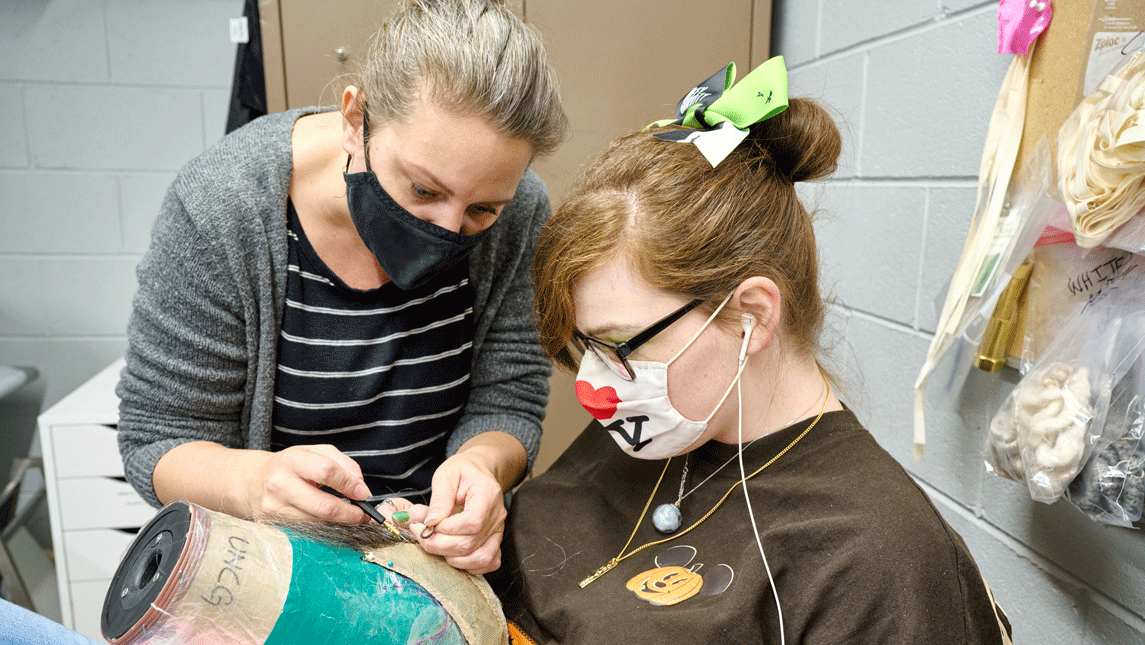
Lecturer in Theatre Jehann Gilman is a specialist in hair, wigs, and makeup. She has been wig master at South Coast Repertory Theatre in Costa Mesa, California, and wig and make-up supervisor at Actors Theatre of Louisville in Louisville, Kentucky. She has done everything from making and fitting false teeth, creating foam-latex and silicone prosthetics, sculpting and creating pros-aide transfer scars, teaching how to create period makeup and hair looks to creating realistic and beautiful wigs for both period and modern theatrical productions, and even the occasional hair piece for film. At UNCG, she actively encourages students to embrace the hair and makeup world to give them another path toward making high quality professional theatre.
“I joke sometimes that I’m not allowed to participate in Halloween costume contests anymore because I have too many ‘professional’ skills,” she says. “But Halloween is one of my favorite times of year because I get to go full-out on dress-up and character creations. With my professional life in full swing, it’s tough for me to actually get a chance to do much Halloween-specific work. However, there are usually a handful of horror and thriller independent films that happen around this time of year, haunted houses and haunted tours that are always in need of talented makeup artists and hairstylists, and a lot of people who are looking for help with their Halloween costumes and makeup looks. These are always great opportunities for students to jump in and start getting hands-on experience and take creative control.
I once worked with someone who described hair and makeup as ‘the frosting on the costume cupcake.’ I’ve got a complicated relationship with that statement. One the one hand, I love how it expresses that a costume isn’t complete until the hair and makeup elements have been added.
Think of a Victorian style gown without the silhouette of a Victorian hairstyle, or Queen Elizabeth without the plucked hairline and white makeup! However, it also implies that makeup and hair are just for decoration at the end, but there is so much more to it. Hairstyles are chosen for a variety of reasons, including how they make us feel on a psychological level and how we are reacting to our social environment.
Hair and makeup are often reactions to societal pressures and are/were worn as physical representations of where someone stands on changing societal norms. Makeup and hair are often used to reaffirm our sense of self, and have been shown to greatly increase confidence for transgender individuals when used as a tool to affirm gender identity. Of course, sometimes it’s just for fun because makeup and hairstyles can be works of art, works of self-expression or just plain pretty and fun.
The best part of all of this – costumes, makeup, hair – for me, is the ability to be anything at all. It’s a chance to play, something we so rarely get to do as we grow older, and it’s a chance to play in a completely socially sanctioned way. I love that. I meet most of my favorite people on or around Halloween, because, for once, there’s no pretense. There’s just a bunch of people running around in something they’ve created, pretending to be someone else but actually just being themselves without so much fear of what people might say. At least, that’s been my experience, and I hope that’s how it continues!”
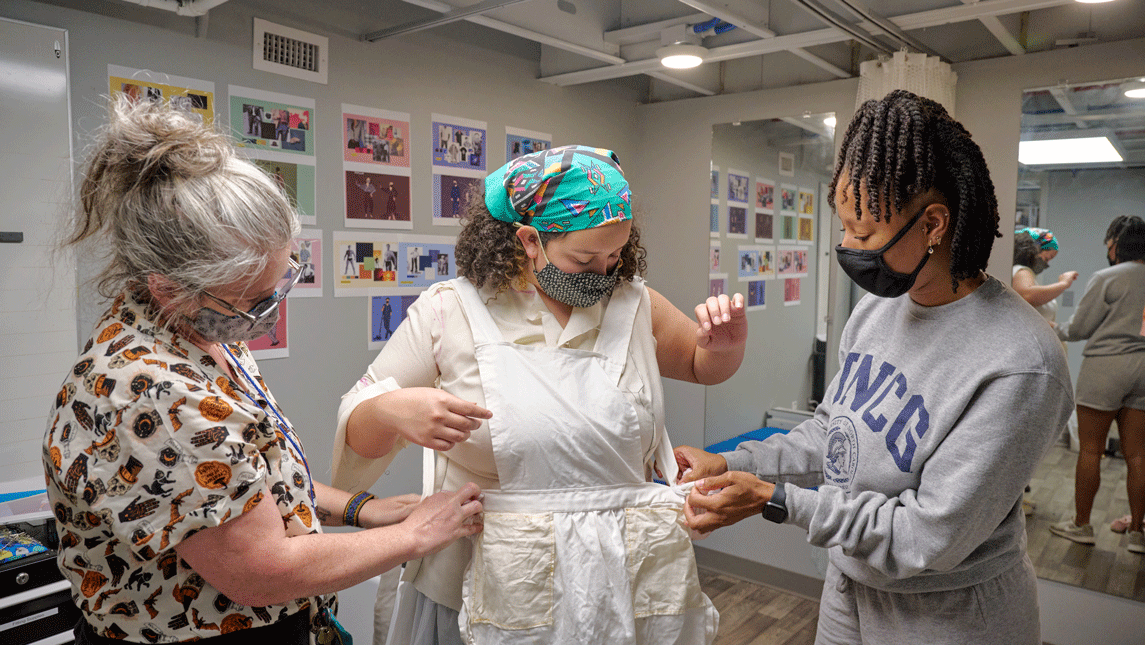
Amy Holroyd, costume director and studio manager has worked with the Bristol Opera, designed a stage combat showcase performed in the Globe Theatre in London, and costumed a pilot television episode for BBC titled, “Bridgeman.” She was Costume Shop Assistant for George Street Playhouse in New Jersey where she worked with Broadway talent.
“Costumes are a way of presenting yourself differently to those around you. An opportunity to take on a different persona or character,” says Holroyd. “Some people wear costumes daily as a way to mask who they really are. Onstage they display a character, time period, time of year, age, lifestyle, social status…. Costumes are not just limited to Halloween, theatre, or special events. As a professional costume-maker, there is a difference in what we do for the stage versus a one-night event like Halloween. My way of distinguishing the two types of costume styles is through how I spell them. ‘Costumes’ are clothing for the stage or film, they have some period accuracy. They are tailored and well fitted to a performer, and are created for repetitive use.
In theater costuming, we try to be as authentic and honest about the characters we are creating and dressing in a given script. We analyze the scripts through character analysis. We consider time, period, socioeconomic status and so on. Through research, open conversation, analysis of character and care given to creating these choices, we try to avoid offending and are always brainstorming ways to avoid cultural appropriation.
And then ‘Kostumes,’ – these are usually created for a one-time experience, or are made quickly. I’m not sure the same character analysis is done when someone looks for their Halloween Kostume. Those characters and Halloween Kostumes are usually based on stereotypes and imitation.
But, Halloween is a time for some of our students to use their newly learned costume skills, designing, sewing and crafting. Currently right now in most of our classes we are getting lots of questions about how to make a certain costume. ‘How would we make a lobster costume?’ Personally, Halloween has always been my escape from perfectionism. How can I make my kids the quickest, easiest, Halloween Kostume possible? Even though I can make the most elaborate period costume, Halloween is a time for me to put those things aside and concentrate on minimalism.”
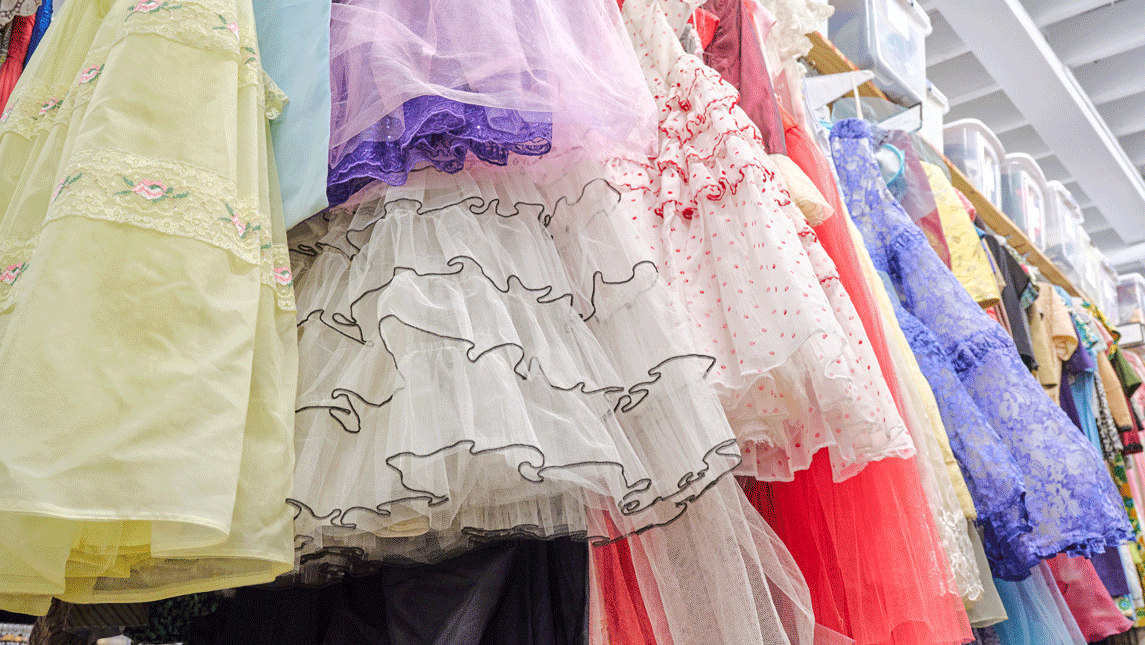
Interviews by Susan Kirby-Smith, University Communications
Martin W. Kane, University Communications
